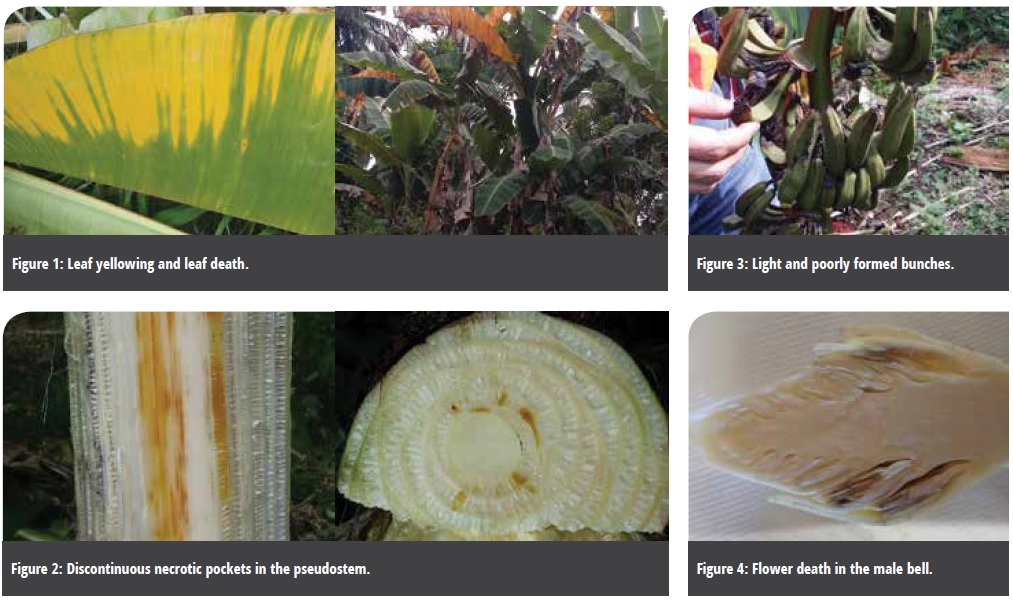Under the Microscope profiles the industry’s emerging and exotic diseases. Sometimes you just need the facts, fast.
What is Banana Wilt Associated Phytoplasma?
Banana Wilt Associated Phytoplasma or BWAP is a disease caused by very small bacteria which do not have a cell wall and cannot be grown on artificial media. These bacteria live in the phloem tissues of the plant that transport sugars. Disruption of sugar and nutrient transport leads to disease symptoms such as leaf yellowing and poor yield.
What are the symptoms?
Symptoms of BWAP are leaf yellowing and leaf death (Fig 1). When the pseudostem is cut we see discontinuous brown to black vascular streaks associated with necrotic pockets of rot (Fig 2).
Bunches are very light while in some cases they do not develop well and miss fingers (Fig 3). Internal in the male bell there is a decay of the flowers (Fig 4).
How do they spread?
Phytoplasmas are transmitted from plant to plant by a range of sap-sucking insects such as leafhoppers acting as vectors. The plants are systemically infected including the fruit. Phytoplasmas can be acquired by an insect feeding on an infected plant. Movement of these insects and infected plant material over larger distances by humans is another major source of spread of the disease.
Where in the world is it found?
Banana Wilt Associated Phytoplasma is found in East Sepik, Morobe, Madang and Western provinces in PNG. Very closely related strains causing similar symptoms on banana have recently been identified in other parts of PNG and the Solomon Islands. More research is needed to determine if Phytoplasma strains killing other hosts such as coconuts, called Bogia Coconut Syndrome in the same area belong to the same pathogen species and if they can cause disease on bananas.
What are we doing to protect our industry?
• Strict regulation concerning import of plant material requiring screening for absence of Phytoplasma’s.
• We are using a molecular diagnostic test to screen imported plant material during the Post Entry Quarantine process.
• Increasing awareness among industry stakeholders.
What can I do to protect my farm?
• Use only disease-free planting material.
• Check your farm frequently for new pests and unusual symptoms.
• Maintain good biosecurity practices.
Who can I call?
Professor André Drenth
07 3443 2460
Photos and text provided by Prof André Drenth, University of Queensland as part of project BA16005 Strengthening the banana industry diagnostic capacity.

